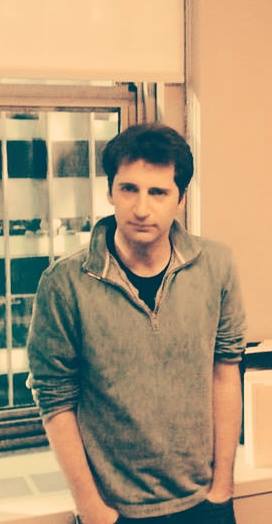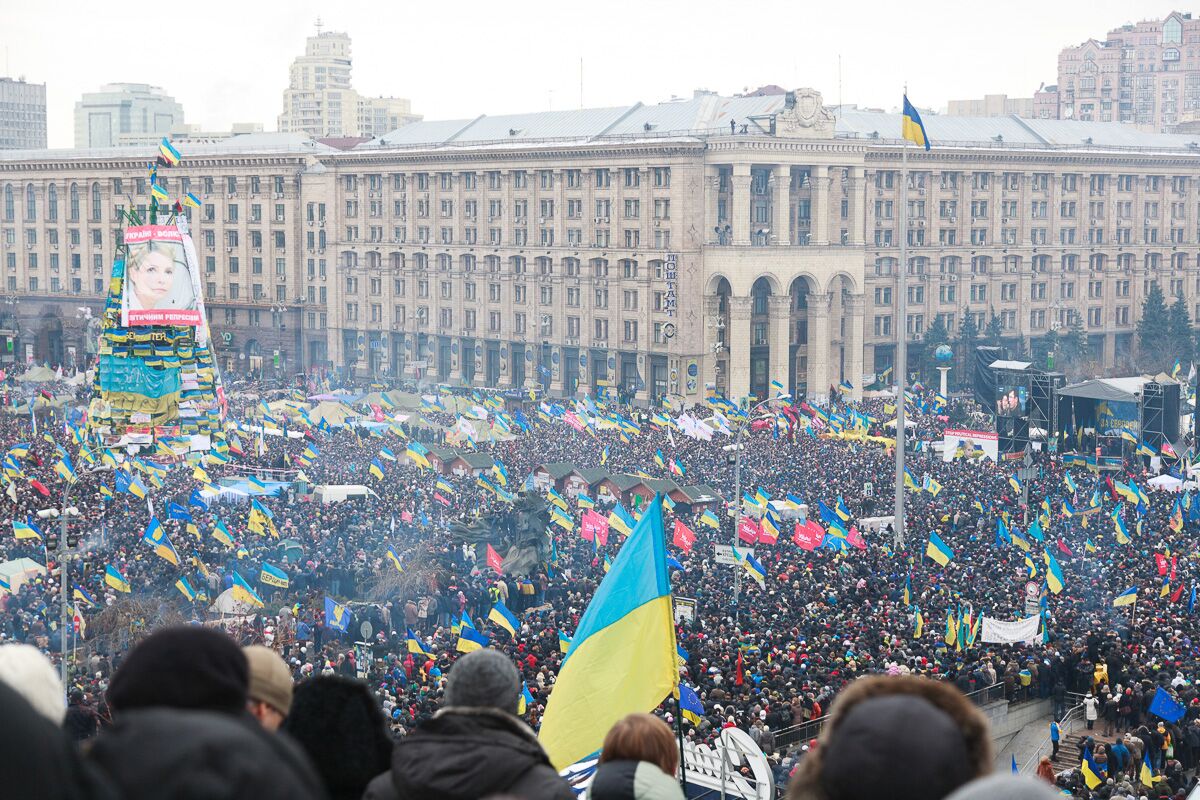As Alexander Pushkin wrote, “lack of courage is the last thing to be forgiven by young people who as a rule, regard valor as the foremost of human virtues.”
The ‘valor’ spirit of the EuroMaidan resonates today, five years on, and its success brought about the ouster of an autocrat whose kleptocratic regime had been bankrupting the country.
It’s not hyperbole to say that the EuroMaidan Revolution sowed the seeds for modern Ukraine.
The West’s sympathy and active diplomatic measures toward Ukraine have only increased in the past five-plus years.
Just this week in Washington, Ukrainian activists organized a candlelit vigil to commemorate the deaths of the “Heavenly Hundred,” – the more than 100 demonstrators shot dead by Viktor Yanukovych’s security forces.
In a gesture to show military cooperation, the U.S. delivered a batch of Javelin anti-tank busters to Ukraine last April, which marked the first provision of lethal weaponry despite warnings from Russia. The systems stand to help Ukraine’s arm repel future attacks by Russian-led forces.
And this week at the Verkhovna Rada, European Council President Donald Tusk reaffirmed the EU’s commitment to Ukraine’s safety and territorial integrity.
It must be underscored that one of main reasons protesters endured cold weather in late 2013 was to confront Viktor Yanukovych’s authoritarian rule of law, and deliberate methods of political corruption. Things have improved, surely, as anti-corruption bodies have been implemented, with varying results.
Surely, the axiom of “the prejudice of low expectations” should not absolve itself as Ukraine’s oligarchs still serve as a powerful and influential class.
“I have a feeling of constant waiting. It’s like waiting process that is somewhere at the background of my mind,” Maksym Bilousov, a photojournalist whose works of the Euromaidan have been on display at the Mystetskyi Arsenal National Art and Culture Museum in Kyiv, tells me.
Oligarchs like Rinat Akhmetov and Igor Kolomoisky remain as powerful as they were in the past. And as recent as a few months ago, the International Monetary Fund on Dec. 18 agreed to loan Ukraine up to $3.9 billion through the end of 2019 in a move that signaled confidence the country’s long-term outlook.
“There’s a feeling of disenchantment, of course – but on the other hand, during Maidan there were too many expectations,” Alya Shandra, Euromaidan Press editor-in-chief tells me. “But I met with an old acquaintance and he’s thrilled, and says he never thought Ukraine would get so far and so fast.
“I guess Maidan was a success in a way because now we are afraid of a Revanche (which means a policy or movement aimed at achieving the return of a nation’s lost territory).
“On Maidan, the main demand was to get rid of Yanukovych and that we did,” adds Shandra.
Shandra is also the producer of the documentary “Putin’s Hostages: Ukrainian Political Prisoners of the Kremlin.” The film highlights three political prisoners held in detention by Russian authorities, and depriving them of basic human rights.

The EuroMaidan Revolution should be regarded as a birth of a new nation, and perhaps seen as a threat to the whole post-Soviet order. For all of Petro Poroshenko’s imperfections, he was elected president cleanly in 2014, and one can only hope the March 31 general elections will run just as smoothly.
“First it was waiting for Yanukovych and his regime to give up. Now I am waiting for the end of the war, and for Ukraine to gain back its territories including parts of Donetsk oblast, Luhansk oblast and the Crimea,” adds Bilousov.
“I can’t end the war myself, but I support the soldiers of the Ukrainian army and I am involved from time to time in photo projects to show their courage.”
Eastern Ukraine, which Bilousov speaks about, remains volatile in what has been seen as a largely forgotten and bitter war with Russian forces. The Minsk Agreements remain precarious ever since the summit four years ago. The talks were overseen by the Organization for Security and Cooperation in Europe (OSCE).
Between 12,800 and 13,000 people, both civilian and combatants, have been killed in hostilities in eastern Ukraine since the outbreak of the Russian-sponsored war in spring 2014, according to the United Nations Human Rights Monitoring Mission in Ukraine, and reported by the Kyiv Post.
3,300 of those killed in the hostilities were civilians. Also, between 27,000 and 30,000 persons were injured amid hostilities in the region amid hostilities, Deutsche Welle said, as also reported by the Kyiv Post.

But as for the enduring legacy of the Euromaidan – its meaning, its genesis, its aftermath, its raison d’etre – it is for Ukrainians to realize their own destinies, which give some a feeling of inward optimism.
“I’m a super optimist, you know. Ukraine still has got millions of problems, but it moves,” Olenka Onohda, who works at the Mystetskyi Arsenal, tells me.
“I never had illusions and realized that changes would not come fast. And I feel energized about how my personal life – an understanding of responsibility – has changed. This is probably the most important result – (an opportunity to experience my own) personal change.”


